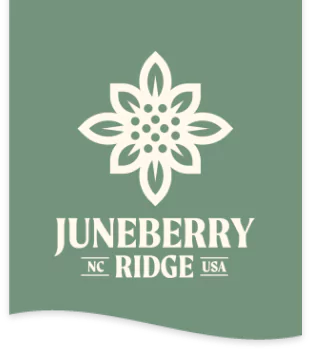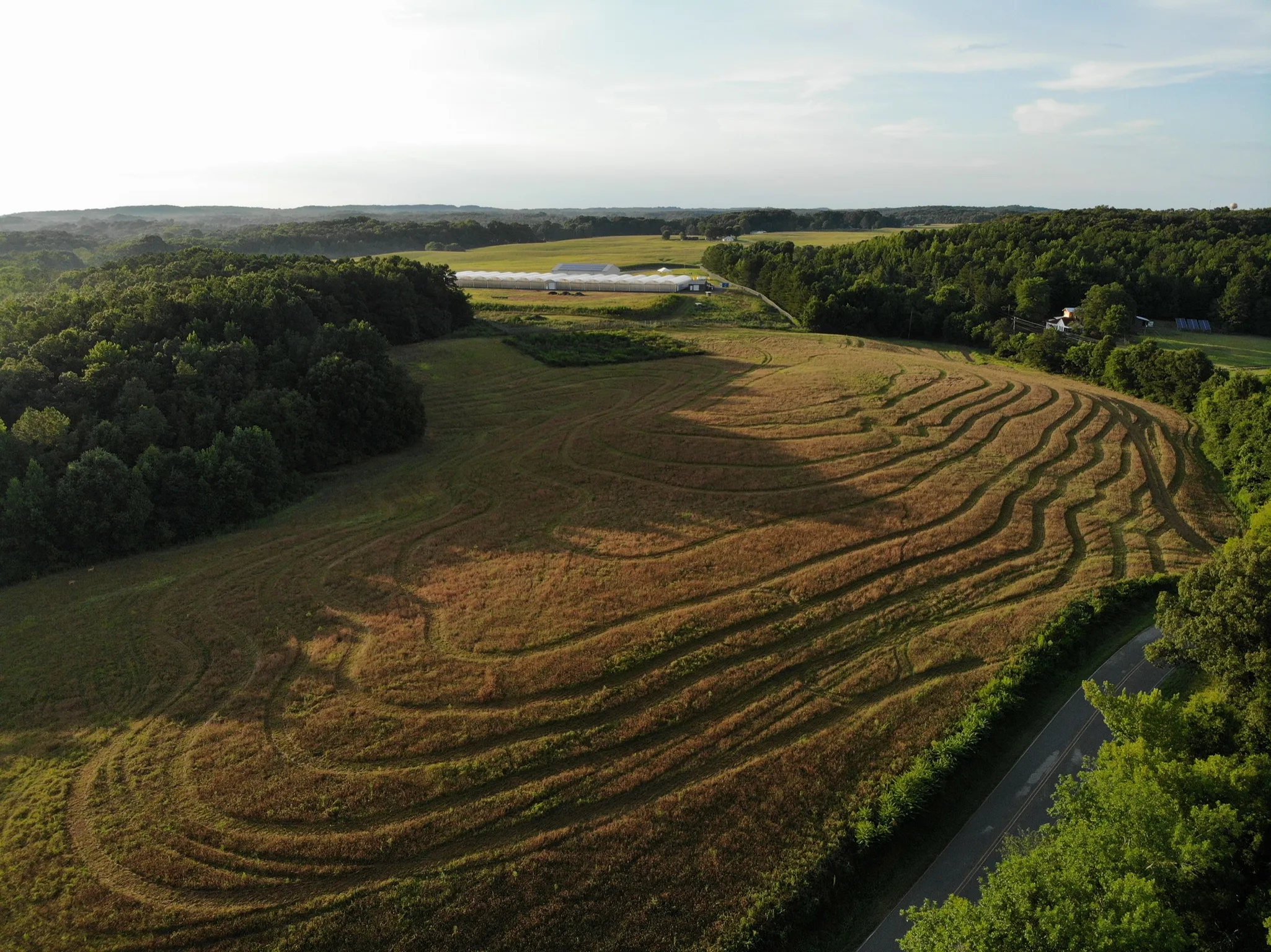The most productive area in a system is the edge.
That’s a consistent truth we see in all kinds of natural systems. One of the most productive habitats in nature is where a forest borders a meadow. The edge area where water meets land is another example of a place where you will always find a variety of plants and creatures thriving together.
A fascination with edge spaces has guided one of the most interesting projects at Juneberry Ridge. In 2018, we began our transformation of the 20-acre West Hinson Pasture. After about a decade of cultivation as a conventional monoculture system, rotating corn and soybean crops, West Hinson is now a place where we are exploring regenerative agriculture.

How we are letting nature lead.
Our approach to regeneration of West Hinson is a sort of intellectual edge space in its own right. It borders on other thoughtful notions about how nature can thrive in cooperation with people who let nature lead. A few key concepts provide the productive edges that come together in West Hinson. One of our most important influences is Mark Shepard, owner of New Forest Farm in Wisconsin. His book Restoration Agriculture is about creating agricultural ecosystems that imitate nature and sustain themselves naturally over years. It inspired a thoughtful evolution of our thinking at Juneberry.
We have big-picture objectives for these acres. Our actions now have set it on a 100-year course to develop into a biodiverse orchard with fruit and nut trees as well as mature larger trees. Ultimately, it will become a space for animals to graze, wild creatures to hunt and forage, and for people to learn.
Grazing livestock are crucial to the management of the system. Their disturbance and inputs enrich the soil and provide nutrient dense proteins for our kitchen and customers. We practice rotational grazing to improve soil, plant, and animal health.
Which brings us to another edge: hospitality.
Part of our long-term vision for West Hinson is to see it flourish as an event venue that will deliver comfort, inspiration, and reflection in equal measures. A natural setting where trees, grains and grasses, and animals both domesticated and wild could all make a home and live in harmony.
We are developing places like this all across our 750-acre farm so that our guests can see, smell, feel, even taste how enriched our world becomes when we Let Nature Lead™. West Hinson Pasture will soon become an orchard setting for weddings, team building activities, educational seminars, and other events that bring people together in nature.
Before we could make this pasture hospitable to people, we had to first make it hospitable to plants, animals, and insects.
We are enduringly grateful to our neighbors who are helping bring West Hinson from its past into its future. Eugene Smith is one of those people. As a successful dairyman and field crop grower in Stanly County, North Carolina, he held a lease on this land and rotated corn, soybeans, and wheat in West Hinson for about a decade before we embarked on our project. He helped us link the pasture’s history to its regenerative future. With generosity and enthusiasm, he jumpstarted our work by planting the pasture with the fescue we needed for grazing animals – an essential first step in our ambitious transformation. Our next-door neighbor Steve Lee is another; he farmed this land before Eugene did, and raised his children here. The memories and insights he shares help us understand where this land has been while we chart where it is going. We are thrilled that his granddaughter is also connecting past and future here – by getting married at Juneberry this fall.

Disturbance is another edge to our approach.
It’s a well observed fact that nature thrives when a status quo is disrupted. Events that look to people like catastrophes are bursts of opportunity for nature – plant and animal life alike need them. One of the weaknesses of monoculture farming is that it does not – really, cannot – tolerate disturbance. Regenerative agriculture depends upon it. A powerful storm takes down mature trees. A landslide alters terrain. Beavers turn a small creek into a watery bog. When the land is disturbed, nature reacts with growth. Shrubs, trees, animals, and insects rush into the opportunity that has been created. Disturbance creates new edges in the land.

We decided to be our own hurricanes and tornadoes.
Once fescue was established and animals were grazing in West Hinson, our team began moving earth to create productive disturbances. We started looking at the contours of the land with an eye toward creating as many productive edges as we could. We dug trenches to sequester water and create riparian zones. Even small muddy puddles turned into thriving places that attract new growth and animal activity.
Integrating trees into fields where livestock graze is called silvopasture. In West Hinson, we introduced 1,300 different trees and shrubs representing 23 variations of genus, species or cultivar. Chestnut, Mulberry, Persimmon, Honey Locust, Redbud, PawPaw, Fig, Blueberry, and of course Juneberry are all growing there now. They’re all mixed together in dense lines that create additional edges, and it is exciting to already see variety appearing through open pollinated seedlings. With this method of planting, we’ve started a 100 year process to develop a living orchard to evolve over the decades to come. It is already bearing fruit and is on its way to becoming a mature polyculture fruit orchard over the next 30 years. By 2050, we expect our nut tress will have grown tall strong trunks, towering 40 feet and spanning canopies equally as wide. The edges of the shade will evolve along the way, introducing more opportunities for sustainable growth.
And with humility and gratitude, we accept the unexpected.
We are grateful for precious gifts that nature gives to West Hinson, like a wild persimmon that nestles into the meadow, or a surprise honey locust tree that shoulders its way in among the other trees. Our project in West Hinson is not just a work in progress; it is a conversation with nature. It reminds us of the influence of Daniel Griffith, who writes extensively about “rewilding.” He teaches us to assume from the outset that our decisions may be wrong and to be open to corrections from nature. We apply that regenerative mindset here. We don’t expect everything to work. We’ve already had to make some adjustments, and we expect to make more. But we are trying. And we are listening. As the conversation progresses, we will also keep sharing.

Stay tuned for more posts about regenerative agriculture here at Juneberry Ridge. If you’re considering hosting an event, planning your wedding, or looking for a reason to escape into nature, you can contact our events team here.
Please also share your thoughts and questions with us, we can’t wait to hear from you.


